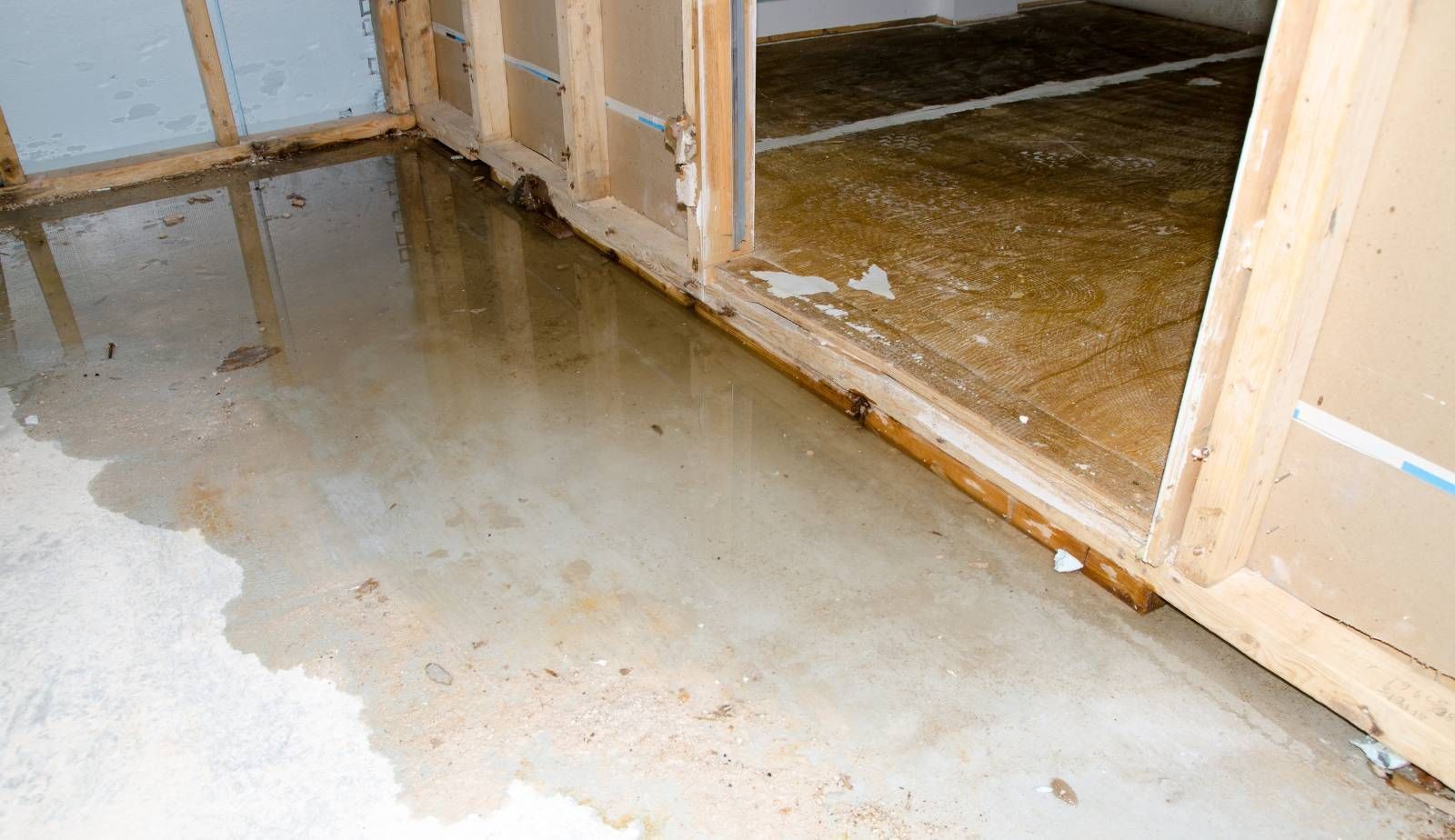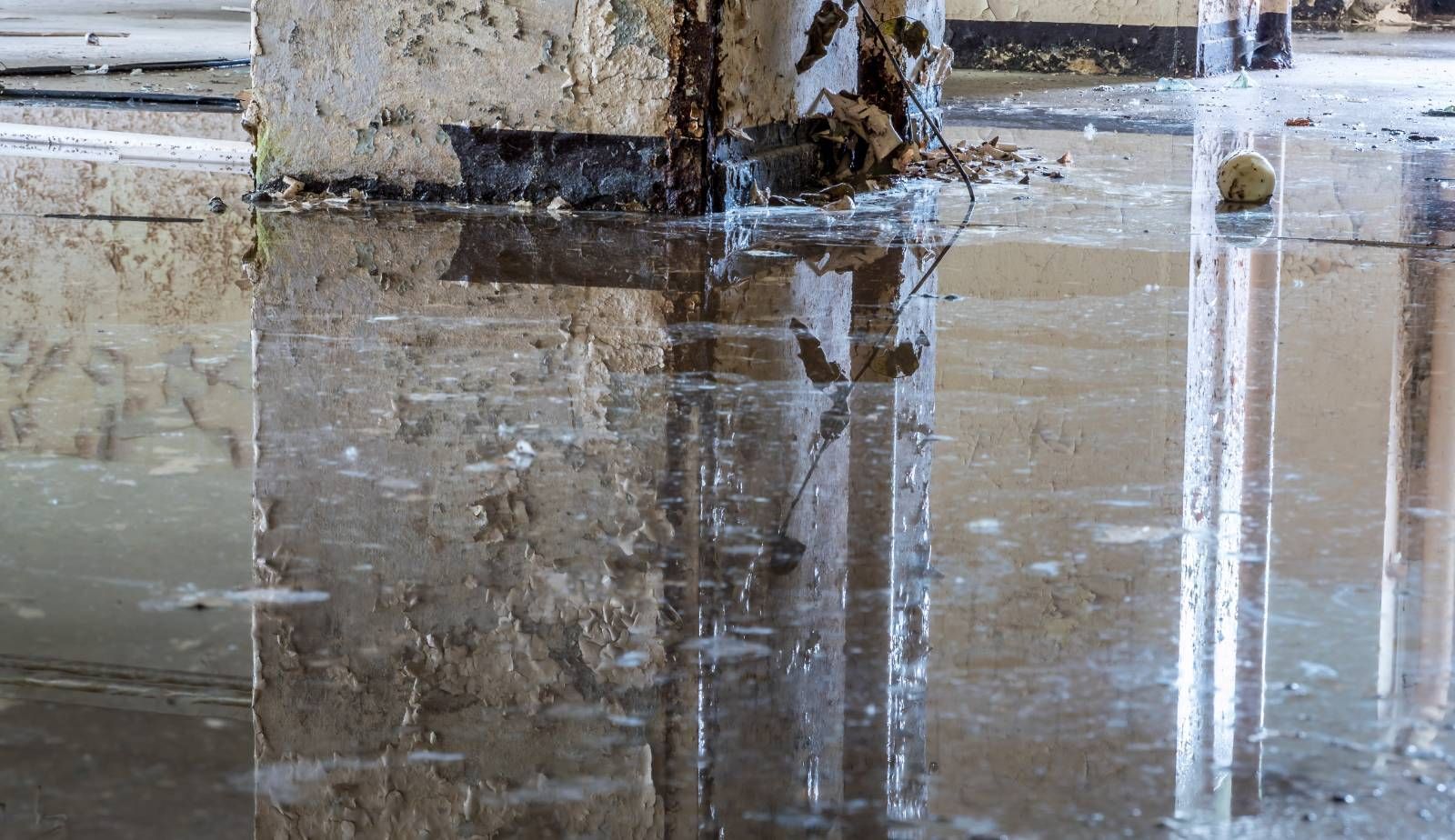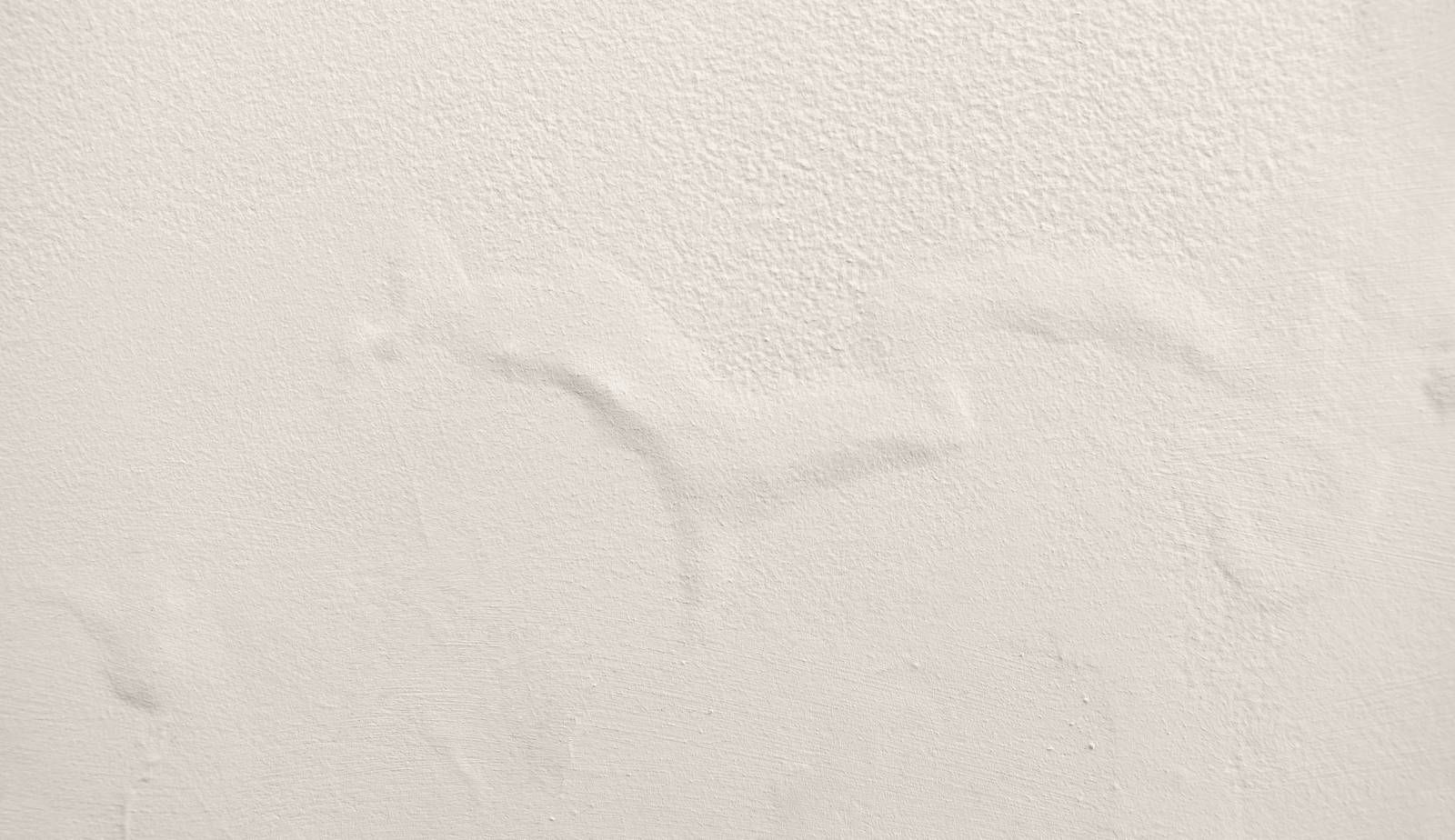The Long-Term Effects of Untreated Water Damage: Understanding Structural Risks and Rising Costs, with Expert Tips from Drymax
Untreated water damage can lead to significant and often irreversible issues within a home. Over time, the presence of moisture can undermine the structural integrity of a building, resulting in problems such as wood rot and compromised foundations. Addressing water damage promptly is essential to prevent escalating repair costs and maintain a safe living environment.
In many cases, the effects of neglecting water damage extend beyond simple aesthetics. Mold can begin to thrive in damp areas, posing serious health risks to residents. This not only impacts the quality of air within the home but also requires professional restoration services to manage effectively and ensure that the underlying issues are resolved.
Investing in timely restoration services is crucial for homeowners facing water damage. Engaging professionals ensures that the damage is assessed accurately and addressed, thereby mitigating long-term impacts. By taking proactive measures, individuals can protect their homes and avoid the heavy expenses associated with prolonged water damage and its effects.
Understanding Water Damage
Water damage can manifest in various forms, each with its unique causes and implications. Identifying these types is crucial for effective remediation. Awareness of common causes can also aid in prevention efforts.
Identifying Different Types of Water Damage
Water damage is categorized primarily into three classes: clean water, grey water, and black water.
- Clean Water: This originates from burst pipes or leaks. Though less hazardous, it can lead to mold growth if not addressed promptly.
- Grey Water: This includes water from appliances like dishwashers and washing machines. It may contain contaminants that can pose health risks if ingested.
- Black Water: This is highly contaminated water, often resulting from sewage backups or flooding. It poses serious health risks and requires professional intervention for safe cleanup.
Identifying the type of water damage is essential for determining the correct remedial actions.
Common Causes of Water Damage
Several factors contribute to water damage in homes and buildings. Recognizing these can help in prevention.
- Burst Pipes: Aging plumbing systems can lead to pipe bursts, releasing large volumes of water quickly.
- Flooding: Heavy rains and storms can overwhelm drainage systems, causing water to enter homes. This type of damage often requires immediate response to mitigate costs.
- Sewage Backup: Blockages in sewage systems can lead to unpleasant and hazardous flooding within properties. This requires specialized cleanup services to ensure safety.
- Standing Water: Accumulated water can result from poor drainage. It creates an environment for mold and structural damage.
Understanding these causes allows property owners to take preventive measures, ensuring structures remain safe and intact.

Immediate Consequences of Water Incidents
Water incidents can lead to quick and severe consequences for properties. Ignoring or delaying responses can result in structural damage and significant health risks, notably from mold growth. Addressing these issues promptly is crucial for maintaining safety and minimizing long-term impacts.
Structural Damage and Safety Concerns
When water infiltrates a property, it can compromise its structural integrity. Saturated materials like wood and drywall can weaken quickly, resulting in:
- Warping and Buckling: Wooden beams and flooring can start to warp, creating uneven surfaces.
- Foundation Compromise: Prolonged exposure to moisture can affect the foundation, leading to cracks and instability.
Safety risks are also amplified during this time. Weak structures may lead to collapses or injuries, especially in areas with heavy water infiltration. Property owners must prioritize inspection and restoration to ensure structural safety and prevent escalating repair costs.
Early Signs of Mold and Health Risks
Mold growth can begin within 24 to 48 hours following a water incident. Recognizing early signs is vital to mitigate health risks associated with mold exposure. Common indicators include:
- Musty Odors: Unpleasant smells in affected areas may suggest mold presence.
- Discoloration: Staining on walls or ceilings can indicate water damage and possible mold.
Health risks associated with mold range from respiratory issues to skin irritations. Individuals with allergies or weakened immune systems may face more severe reactions. Therefore, immediate action is essential to address water damage and reduce health hazards efficiently.
Long-Term Structural Implications
Water damage that is not properly addressed can lead to significant long-term structural implications. These issues can pose serious risks to both safety and property value. It is crucial for property owners to understand the risks associated with untreated water damage to make informed decisions.
Compromised Structural Integrity
Continuous exposure to moisture weakens structural integrity. This compromised strength can result in bowing walls, sagging ceilings, and unstable foundations. Over time, the risks escalate, potentially leading to catastrophic failures in load-bearing elements.
Homeowners may face costly structural repairs as more damage accumulates. The longer the water is left unchecked, the greater the risk of severe structural issues. Regular inspections and timely interventions by professionals are essential for maintaining safety and stability.
Impact on Wooden Structures
Wooden structures are particularly vulnerable to water damage. Prolonged moisture exposure can lead to wood rot, which significantly undermines structural support. Wooden beams and joists can become soft and spongy, weakening their ability to bear weight.
As the wood deteriorates, it may also attract pests such as termites, further exacerbating the issues. Property owners might need to replace compromised wood, which can lead to additional expenses and extended repair timelines. Effective restoration efforts can prevent these severe outcomes and preserve the integrity of wooden structures.
Effects on Property Value
Untreated water damage can adversely affect property value. Prospective buyers are often deterred by signs of water damage, viewing them as indicators of larger issues. Properties with compromised structural integrity or visible rot may linger on the market longer and face price reductions.
Insurance companies might charge higher premiums or deny claims for properties with a history of water damage if not properly mitigated. Keeping a property in good condition not only preserves structural integrity but also ensures its market value remains intact. Timely professional restoration is key to preventing these significant financial setbacks.
Health and Environmental Concerns
Untreated water damage can lead to significant health risks and environmental issues. Mold growth and increased allergens pose serious threats over time. Understanding these concerns is crucial for homeowners and property managers.
Mold-Related Health Issues
Mold thrives in damp conditions created by water damage. Mold spores can become airborne, leading to respiratory issues for occupants. Symptoms may include coughing, sneezing, and shortness of breath.
Individuals with pre-existing conditions, such as asthma or chronic bronchitis, may experience worsening symptoms. Exposure to mold can also lead to infections, especially in immunocompromised individuals.
It is essential to address moisture problems promptly to prevent mold growth and safeguard health.
Allergies and Allergic Reactions
Water damage can increase the presence of allergens within a building. Mold is a significant trigger for various allergic reactions. Individuals may experience symptoms such as nasal congestion, itchy eyes, and skin rashes.
Dust mites also thrive in humid environments, exacerbating allergic conditions. It's critical to regularly inspect areas affected by water to mitigate the growth of mold and dust mites.
Implementing proper ventilation and humidity control can help limit exposure to these allergens.
Long-Term Exposure Risks
Long-term exposure to mold and allergens can lead to chronic health issues. Prolonged inhalation of mold spores may result in persistent respiratory problems or mold-specific illnesses.
There is evidence suggesting connections between long-term mold exposure and autoimmune disorders.
In extreme cases, it may even lead to neurological issues. Taking immediate action to remediate water damage not only protects the property but also reduces the health risks associated with mold and allergens over time.

Effective Restoration Strategies
Addressing water damage effectively requires a structured approach. Key strategies involve professional restoration services, advanced drying and dehumidifying processes, and thorough cleaning and sanitizing to prevent future issues.
Professional Restoration Services
Engaging professional water damage restoration services ensures that the problem is managed efficiently and safely. Trained technicians assess the extent of the damage and utilize specialized equipment. This includes high-powered vacuums and moisture detectors, which can identify hidden moisture in walls and flooring.
They develop a comprehensive restoration plan tailored to the specific situation. With experience and knowledge, professionals can expedite the restoration process, limiting further structural damage. Utilizing their expertise minimizes the risk of health hazards associated with mold and bacteria.
Drying and Dehumidifying Processes
The drying process is critical in mitigating long-term damage. Professionals use industrial-grade dehumidifiers and air movers to circulate air and remove moisture. This technology ensures that areas remain adequately ventilated, preventing stagnant air, which can lead to mold growth.
The drying timeline depends on the severity of the water intrusion. Monitoring the moisture levels keeps the restoration on track. Proper ventilation is essential, as it complements the drying efforts by ensuring that all damp areas receive sufficient airflow.
Cleaning, Sanitizing, and Preventing Future Damage
Cleaning and sanitizing are essential steps following water extraction. Professionals use antimicrobial solutions to eliminate harmful pathogens. This is particularly important in areas exposed to sewage or floodwater, where contamination is a concern.
Preventing future damage includes inspecting and repairing any compromised structures or installations. Regular maintenance of plumbing systems and roofing can also significantly reduce the risk of future water intrusion. Implementing these practices ensures a safer environment and helps maintain the property’s integrity over time.
Economic Implications of Untreated Water Damage
Untreated water damage not only poses significant health risks but also has serious financial consequences. Homeowners and property managers may face escalating costs that stem from delayed repairs and ongoing damage.
Costs of Delayed Repair and Restoration
When water damage is ignored, the initial repair costs can skyrocket. Addressing issues promptly minimizes expenses related to extensive repairs. For example, ignoring a small leak can lead to mold growth or structural damage, both of which require specialized restoration services.
If mold develops, remediation costs can reach thousands of dollars. According to industry estimates, mold removal can range from $500 to $3,000, depending on severity. Disregarding needed repairs pushes homeowners to incur additional expenses for structural repairs later, further straining finances.
Increasing Expenses Over Time
The financial impact of untreated water damage often compounds. As water continues to seep into materials, it weakens structures, causing foundational issues. Consequently, repair costs for structural integrity can escalate from a few hundred dollars to tens of thousands if left unaddressed.
Additionally, energy costs may rise due to compromised insulation and HVAC systems affected by moisture. Electrical systems can also suffer, leading to costly repairs or replacements. In the long run, the financial burden of untreated water damage encompasses not only repair and restoration costs but also increased utility bills and potential decreases in property value.
Recognizing and Addressing Moisture Issues
Identifying moisture issues promptly is crucial for preventing serious damage. Key visual indicators and proactive measures can help mitigate potential problems associated with untreated water damage.
Visual Indicators of Water Damage
Signs of water damage can often be spotted early. Water stains are among the most common indicators. They appear as discolored patches on walls or ceilings, usually showing brown or yellowish hues.
Another telltale sign is musty odors. These smells often arise from mold growth, which thrives in damp environments. If a space has a persistent musty scent, it may indicate hidden moisture issues.
Additionally, structural issues like peeling paint, warping floors, or buckling drywall can occur due to prolonged exposure to moisture. These visual cues require immediate attention to prevent further deterioration.
Proactive Measures for Moisture Control
To manage moisture effectively, regular inspections are essential. Homeowners should check areas prone to dampness, such as basements and bathrooms.
Using dehumidifiers can help control humidity levels, particularly in areas with poor ventilation. Keeping relative humidity below 60% reduces the risk of mold growth.
Sealing cracks in walls and foundations helps prevent water intrusion. Regular gutter maintenance is also important to ensure proper drainage away from the home.
Taking these proactive measures can significantly reduce the likelihood of serious water damage, safeguarding both the structure and its inhabitants.

Frequently Asked Questions
Untreated water damage can lead to serious consequences for both structures and health. Understanding these effects is crucial for homeowners and property managers alike, especially regarding structural integrity, repair costs, and overall property value. Below are specific inquiries related to the long-term impacts of untreated water damage.
How can untreated water damage impact structural integrity over time?
Untreated water damage can cause significant deterioration of building materials. Over time, wooden structures may weaken and eventually rot, compromising the safety of the property. Additionally, prolonged exposure to moisture can lead to foundation issues and structural instability.
In what ways does water damage lead to increased repair costs when not promptly addressed?
Delaying repairs due to water damage can escalate costs significantly. Initially minor repairs can evolve into extensive renovations as mold develops or structural integrity deteriorates. Long-term damage may require complete replacements rather than simple fixes.
What health risks are associated with long-term untreated water damage?
Long-term water damage fosters conditions conducive to mold growth, which can lead to respiratory issues and other health problems. Individuals with allergies or compromised immune systems are particularly vulnerable to these risks.
What are the signs that water damage has been present for an extended period?
Signs of long-term water damage include discoloration on walls or ceilings, persistent damp odors, and the presence of mold. Homeowners may also notice peeling paint and warped flooring, indicating moisture-related issues.
How does long-term water damage affect the value of a property?
A property with a history of untreated water damage can significantly lose value. Potential buyers may be deterred by visible signs of damage or the associated risks, leading to decreased marketability and a lower selling price.
What potential complications can arise from delayed water damage restoration?
Delaying restoration can lead to increased mold growth, structural issues, and higher repair costs. Complications may also include legal liabilities if the damage affects neighboring properties or poses health risks to occupants.
You might also like
DryMax Restoration Blogs




